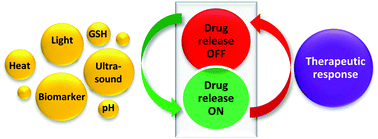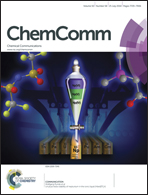Smart drug delivery systems: from fundamentals to the clinic
Abstract
Forty years after the first reports on stimuli-responsive phase transitions in synthetic hydrogels, the first medicines based on responsive components are approaching the market. Sensitiveness to internal or external signals of the body can be achieved by means of materials (mostly polymers, but also lipids and metals) that modify their properties as a function of the intensity of the signal and that enable the transduction into changes in the delivery system that affect its ability to host/release a therapeutic substance. Integration of responsive materials into implantable depots, targetable nanocarriers and even insertable medical devices can endow them with activation-modulated and feedback-regulated control of drug release. This review offers a critical overview of therapeutically-interesting stimuli to trigger drug release and the evolution of responsive materials suitable as functional excipients, illustrated with recent examples of formulations in clinical trials or already commercially available, which can provide a perspective on the current state of the art on smart drug delivery systems.


 Please wait while we load your content...
Please wait while we load your content...